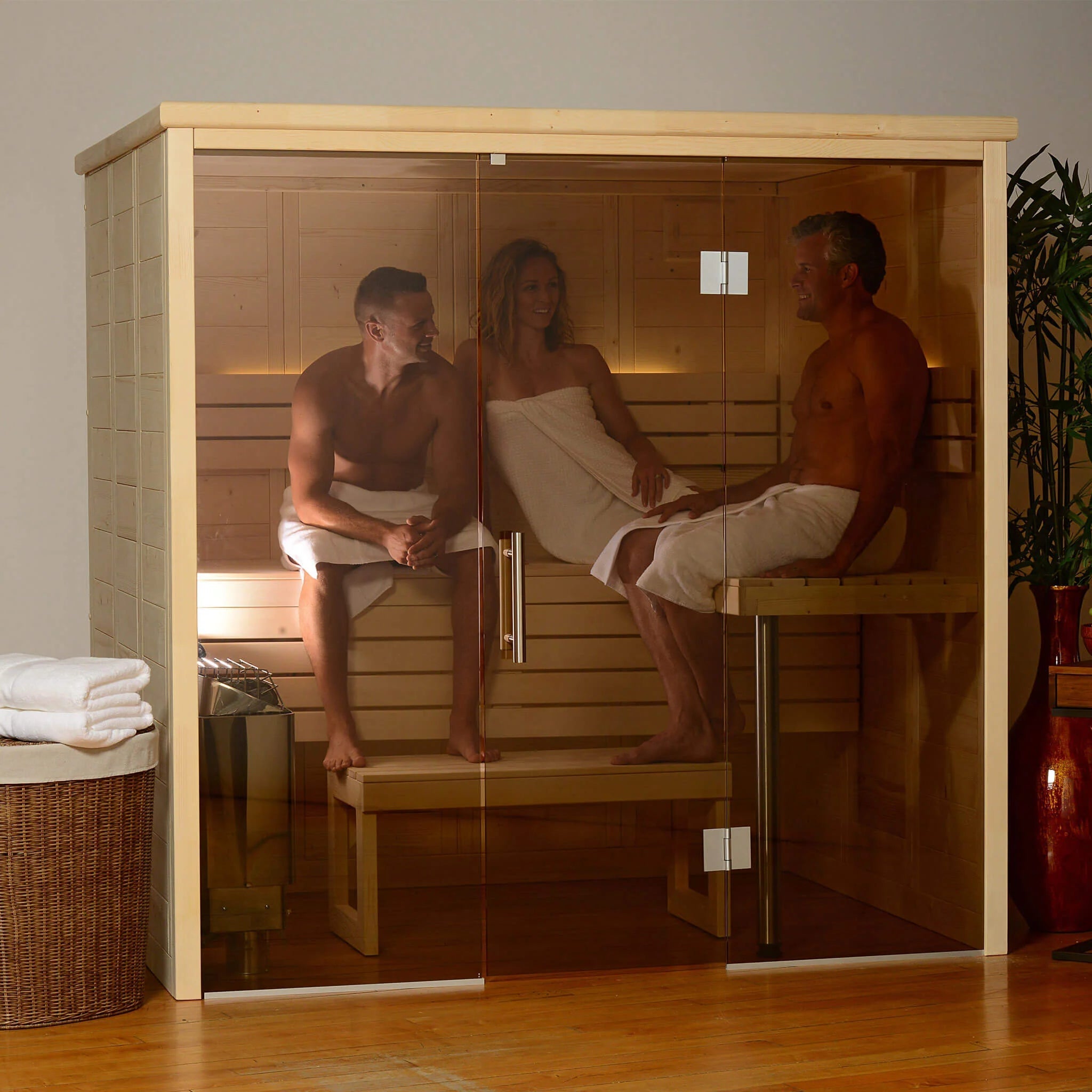All about Traditional Sauna
All about Traditional Sauna
Blog Article
Traditional Sauna - Questions
Table of Contents8 Easy Facts About Traditional Sauna ExplainedThe Main Principles Of Traditional Sauna Getting The Traditional Sauna To Work8 Easy Facts About Traditional Sauna DescribedWhat Does Traditional Sauna Do?
A lot of the weight lost in a sauna is water loss and is re-gained upon rehydrating. Without a question sauna can be a vital component of a healthy and balanced weight loss program. To check out the distinctions between standard and IR saunas, I will certainly divide these right into proven, academic, and made distinctions.Hence, the best point in the saunawhich is at the ceiling straight above the sauna heateris normally between 185 and 190 F. Claims that a standard sauna goes beyond 200 F is merely not real and not applicable for electric saunas sold in the US. The temperature level for a far-infrared sauna is generally set in between 120 and 140 F; nevertheless, unlike the conventional sauna, the objective in and IR area is not to achieve a high temperature level.
Because of this, the temperature distinction is nearly irrelevant, given that excessive sweating causes both sauna kinds, however the technique of heating up the body is various. In an IR sauna the bather will certainly feel hot and will sweat profusely, yet at a lot lower temperature levels (Traditional Sauna). Hence, if the goal is to invest longer amount of times in the sauna, the IR sauna is an excellent selection
When a typical sauna has actually been appropriately heated, the sauna wall surfaces are warm, the air temperature level has attained established temperature and the rocks are super warmed. As an intriguing side note, the heated walls and the rocks are releasing far-infrared warmth, incorporated with the heated air, to develop an "wrapping up warm".
Our Traditional Sauna Ideas

When the high temperature level is attained, the aspects cycle on and off to preserve the heat. Many typical sauna customers appreciate putting water over the rocks to create heavy steam to increase sauna moisture degrees. The benefits of pouring water over the rocks include: making the area more comfy, moistening the nasal passages, and permitting the usage of aromatherapy by mixing important oils with the water.

When the power goes into the body, it creates the body temperature level to raise and ultimately causes sweat. In an infrared sauna it's vital for the emitters/heaters to remain on virtually regularly. Considering that there is no mass of rocks to preserve warmth, the sauna will certainly cool if the emitters shut down.
As pointed out above, the sauna bather in an infrared space wants to place himself before running emitters to obtain maximum take advantage of the warmth. The heating time for the 2 areas can be really different, depending upon just how the rooms are used. For a traditional sauna, a bather ought to permit 30-40 mins for the room to attain a preferred temperature level and to effectively pre-heat the rocks.
Traditional Sauna - Truths
A well created sauna will typically achieve a temperature level of 150-160 F in concerning 30-40 minutes. For hotter temperature levels, the space may require to heat for a longer duration.

Traditional saunas tend to be larger (for this reason use more electrical click this site power) than infrared saunas, although conventional saunas are certainly readily available in one and two individual dimensions. For a two-person typical sauna, 5x6 or 5x7 size is most preferred. The leading bench can conveniently seat two or 3 people and is also long enough to relax throughout the sauna session.
The Single Strategy To Use For Traditional Sauna
The ordinary expense per kWH of electrical energy in the united state is roughly $0.11, so a 4.5 kW heating system will cost roughly $.50 to compete check out here one hour, if the heating system runs constantly for one hour. Usually a sauna heater will run for 75% of the first hour and 50% of succeeding hours on because the elements cycle once the set temperature is attained.

There is a hardly ever reviewed difference in the social experience between the two rooms. While our culture has shed some of the social advantage of the traditional sauna experience, it can be extremely socially gratifying (Traditional Sauna). From family time in the sauna, to heart-felt discussions with better halves, to sauna partiesthe traditional sauna experience can lead to intimate socializing
7 Easy Facts About Traditional Sauna Explained
A lot of higher end infrared areas consist of colored light treatment, audio systems and full-glass fronts.
Report this page